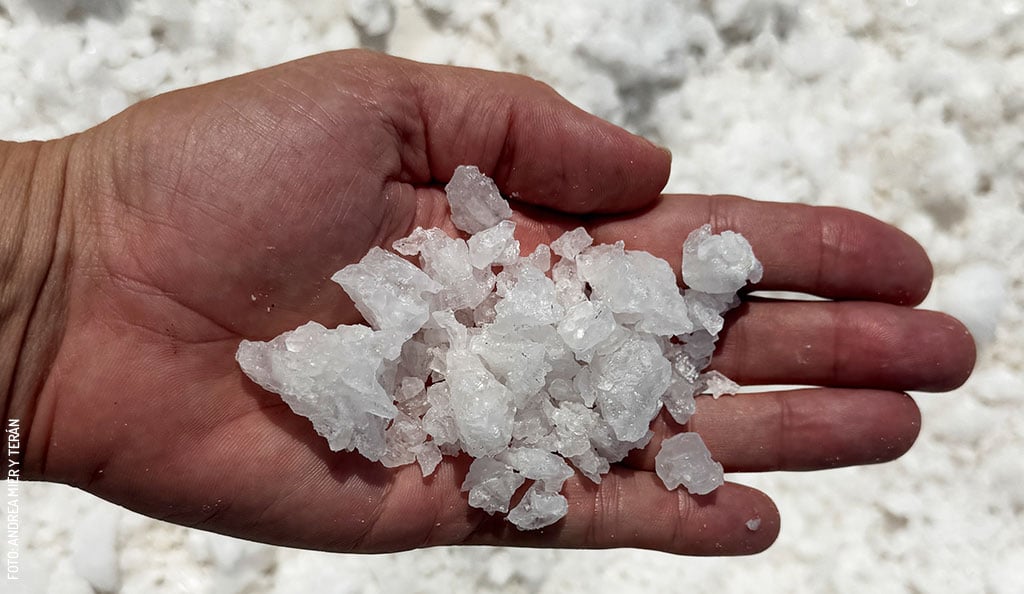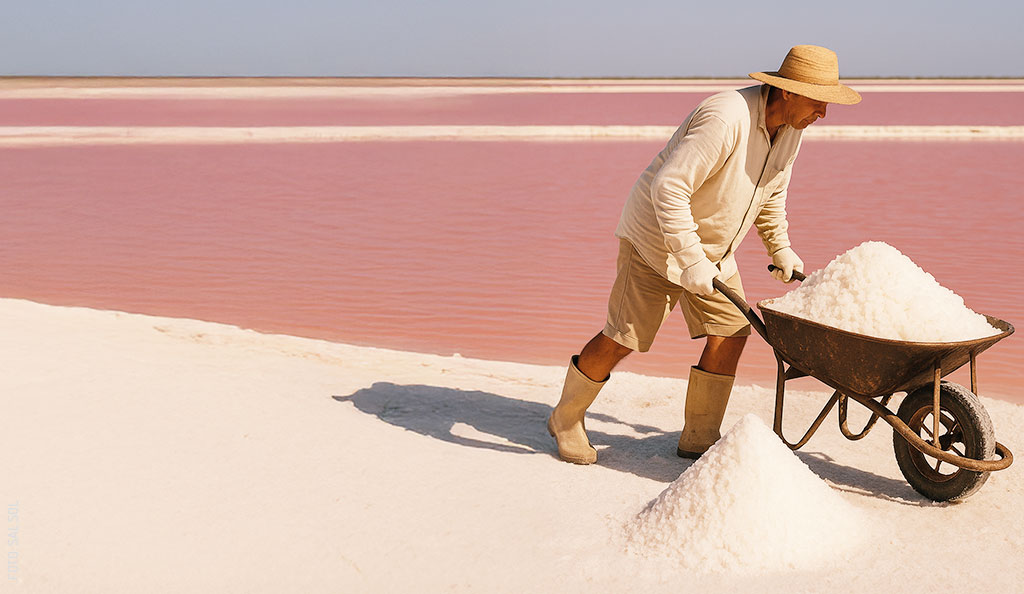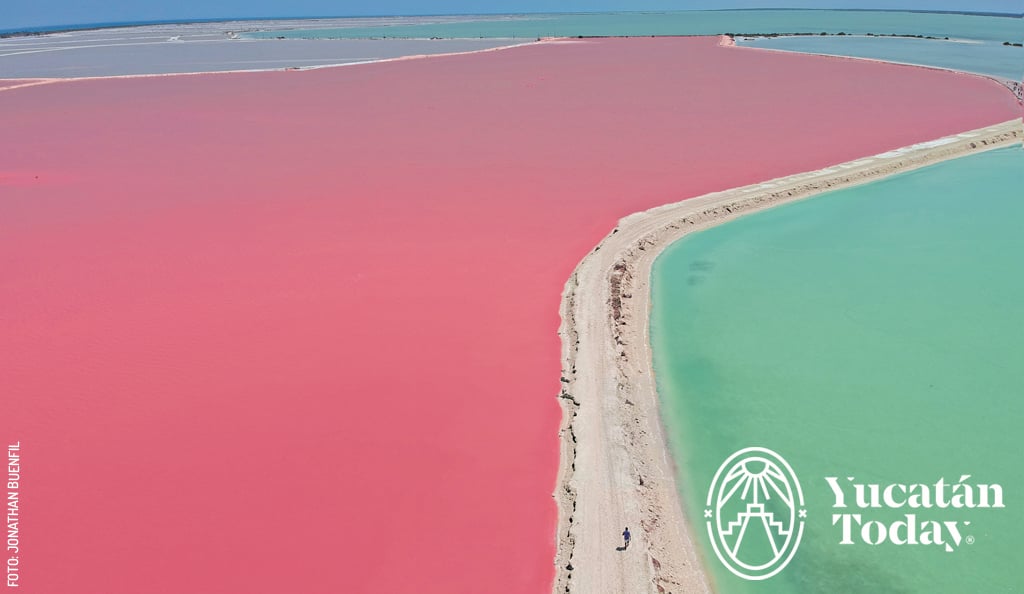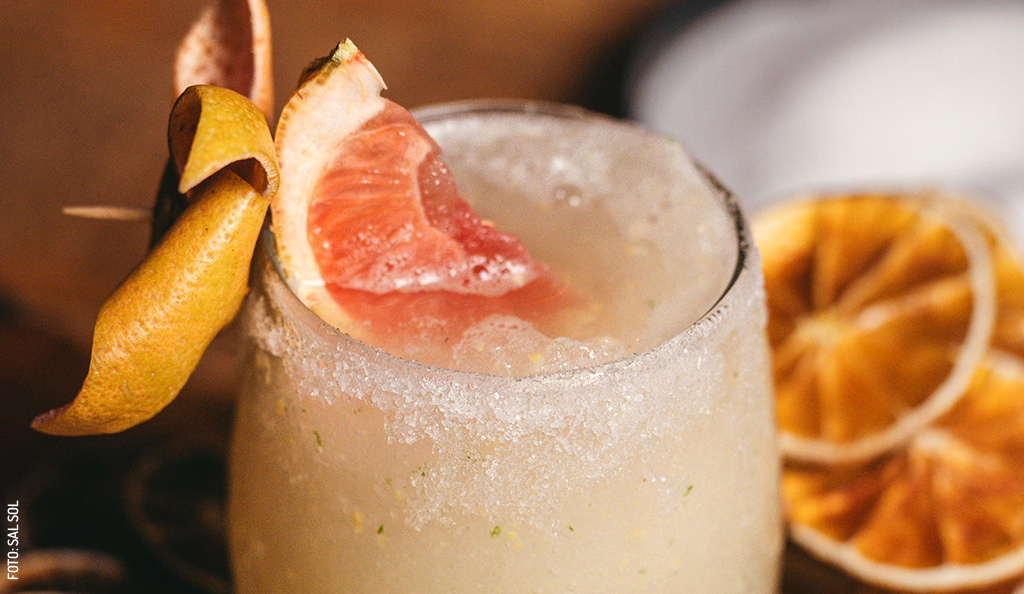
The White Gold of Xtampú: A Salt Worker’s Tale
The sun is merciless in Xtampú.
It hits the coastal salt pans of Yucatán like a hammer, bouncing off the pale earth and water with a glare so fierce it could blind a man without warning. But Don José Guadalupe Chi Aké has been staring it down for thirty years, armed with nothing more than mirrored sunglasses, a weathered cap, and stories as rich and layered as the salt crystals he harvests.

Wearing a sweat-soaked sleeveless shirt and a pair of old Bermuda shorts, Don José moves with the practiced rhythm of someone who has worked in salt since before smartphones or influencers started showing off pastel-hued ponds on Instagram. His skin, tanned by years of sun and salt, is cracked in places, but his eyes remain sharp, hidden behind mirrored lenses that reflect the world in reverse.
"I don't need much," he tells me, driving the edge of his machete into the crystallized surface of the pond with a thwack. "Just this machete, this pala (shovel), and a basket. That's all you need to make a living if you know the salt."
The pond he's working on is a shimmering patch of shallow water, pink from algae and microorganisms, bordered by flat dikes and tarpaulins for drying. Around him, a small team of salt workers hums with energy, each group assigned to a specific section of the ancient site. Their laughter cuts through the stillness between gusts of wind and the distant cry of a flamingo.
The salterns in Xtampú

This is Xtampú, a salt pan that has been producing the prized "white gold" of the Maya for over a thousand years.
“There’s history here, hermano,” José says as he crouches and begins to scrape at the salt with his shovel. “Where you stand now? That’s sacred land. The Maya built their city just over there—Xcambó. Big place. Had roads, a port, trade all the way with the Olmecs and Zapotecs.”
His hands work quickly. Salt splinters in crystalline shards that he scoops with calloused fingers into a large basket. The muscles in his forearms ripple as he lifts it.
“See, this salt,” he continues, hoisting the basket to his shoulder, “It isn’t just for flavor. This is medicine. It’s culture. It’s trade. It’s how we pay school fees and buy tortillas.”
Salt from these pans plays an unexpected role in local industry: it's used by cucumber farmers who process echinoderms—yes, sea cucumbers—that are gutted, washed, and parboiled, before being preserved with salt. It’s a niche, high-value market that ties sea life, land, and tradition into one ecosystem of survival.
Tours of the Xtampú salterns

Don José is more than a salt worker—he’s a sabio de la sal, a sage of salt. Tourists who find their way to Xtampú are sometimes lucky enough to be shown around by him.
“People like stories,” he says with a grin. “So I tell them about how my abuelo taught me the smell of salt before I ever worked it. Or how the salt talks when it’s ready. Did you know that? It makes a sound under the machete when it’s time to collect.”
Behind him, a motor hums—one of the few modern additions to this otherwise ancestral practice. A freshwater well near the salt flats feeds hoses that rinse the salt when rain muddies the crystals or mixes in sand. These tools were donated by someone who believed in the workers, in their project, in their pride. And pride is everywhere here; not just in the work, but in the land, the history, the very salt itself.
“Our salt is better than the one in the stores,” Don José insists. “Refined salt? That’s just chemicals. What we make here has minerals, life. The body knows the difference.”
How salt is artisanally produced in Yucatán

After the salt is washed and dried on tarps under the hot sun — or in the moonlight, for those who prefer the cooler night shift — it’s packed into raffia bags and sent to Mérida. A kilo fetches around 1,200 pesos after processing, a decent price considering a mound of 500 kilos can be formed in a day, depending on the energy of the crew.
“We work fast if the clouds stay away,” Don José explains. “But this is not a race. If you go too fast, the salt’s no good. You must listen to the water, to the wind.”
And the land listens back.
Xtampú, an ancient salt source

The terrain is dotted with charcas—brackish water pools where flamingos feed. Not far from here, the ruins of Xcambó rise like broken teeth from the earth, the remnants of a city built by engineers who elevated it above sea level with packed limestone and sand. The salt pans they engineered remain in use, not just preserved but lived in, breathed in, worked every day.
“Even our ancestors,” José says, “they didn’t use machines. But they knew how to read the sun and the sea. It’s all passed down.”
There’s a kind of poetry to salt—its rawness, its purity, the way it crystallizes history into something tangible. Modern life has replaced much of it with processed, additive-filled products.* Sales have declined in recent years. But there’s a quiet resurgence brewing, led by a wave of consumers looking to reconnect with ancient methods, sustainability, and health.
“More people are coming,” José says. “Not just tourists. Doctors. Chefs. Artists. They want the real salt now. They say it makes them feel better. Maybe it’s true. Maybe it’s just the story.”
He laughs, straightening up, basket empty now and ready for another round.
“But you know what? That’s fine. Stories are medicine too.”
I follow him to where the salt is drying, glistening white under the sun, tarps stretching across the salt pans like sails waiting to catch a wind that never comes. Each pile tells a tale of toil, of time, of ancient practices stubbornly resisting obsolescence.
Behind us, someone starts humming a tune; an old Maya melody, José says, passed down through generations. The landscape, tinged with color from the microorganisms in the ponds, seems to sway in rhythm.
The salt glows. The air is thick. And somewhere, deep in the wind, the past stirs.
Before I leave, I ask José what keeps him here, after so many years.
He shrugs and smiles, pulling his cap down against the glare.
“This is where the salt lives,” he says. “And where the salt lives, so do we.”
Visit the Xtampú salterns on the Yucatán northern coast

For those curious enough to witness the legacy of the Maya crystallized in shimmering salt ponds, Xtampú remains an open invitation. Visitors can walk the salt pans, learn about the ancient techniques still in use today, and even hear the stories straight from José Guadalupe Chi Aké himself. Between salt baskets and machete swings, José doubles as a passionate guide, offering intimate tours for a modest fee of $20 to $100 pesos, depending on your interest and generosity.
It's a rare chance to not just see history, but to feel it underfoot and taste it on your tongue.
Just bring sunscreen…and, maybe, a little salt for the road.
*Please note: Refined salt, also known as table salt, often contains anti-caking elements (considered safe in small amounts) and added iodine, an element that is necessary for thyroid function. Table salt, however, is also stripped of naturally-occurring trace minerals like magnesium, potassium, and calcium. There is no scientific evidence of one being more beneficial (or harmful) for human health than the other.
First published in Yucatán Today print and digital magazine no. 450, in June 2025.

Author: Mark Viales
Independent international journalist from the Rock of Gibraltar. A singer-songwriter with a passion for travel, and a command of four languages.
In love with Yucatán? Get the best of Yucatán Today in your email.
Don't miss our best articles and the monthly digital edition before anyone else.
Related articles

Sal Sol | 79 Years of Origin, Flavor, and Sea
Sal Sol: The authentic sea salt from Yucatan, 100% natural. 79 years of tradition, flavor, and sustainability. The Salt of the Sea.
Perfect in Pink: Las Coloradas
There has been much talk of Yucatán’s photogenic pink lagoons, massive salt mountains and unspoiled beaches. This is our guide to your best...




